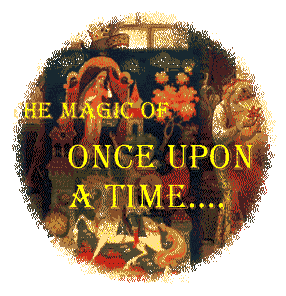| Fable and Folktale
Narrative Logo - Click for Main Menu
Lecture II. Tales Told Around the Fire - The Oral Folk Tradition August 28, 2006
This class session will focus on the kinds of folk material we find in all cultures and on the reasons why we continue to be enchanted by the oral legendstock that has persisted over centuries.
Nuts and bolts before we start-- Be sure to check the Announcements Page at the beginning of every week!
Contents of Lecture 2. "Tattercoat" comes from an old tradition of Cinderella tales from the British Isles. A look back. Oral tales are as old as Language itself. From the earliest pictographs in caves, to the mysterious narratives of the Egyptian Book of the Dead, to the Urban Legends of today, we have always wanted to transform the truths of our lives into universal stories. The legendstock of Folklore can be divided into several categories. Fairy tales, nursery rhymes, "tall tales," ghost stories, chants, jokes, songs, "old wives' tales," spells, parables, urban legends, and, of course, fables are all part of this age-old tradition. These folk creations may circulate in cultures for centuries before they are captured in print. Characteristics of Oral Material Tales enchant us for several reasons. They beguile us because they are always changing, because they are often told in an atmosphere of intimacy, because they are sometimes more daring and exciting than what appears in print, and because they necessarily speak to our deepest hopes and fears in a sensory, imaginative way. Most of all, they persist--a quality that carries infinite implications, in itself. The roots of Cinderella and the genius of Perrault The transmission of folk tale to printed book - fixing the audience.
continue with Lecture II Notes
|

